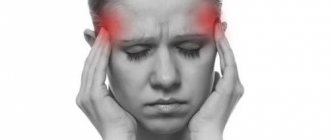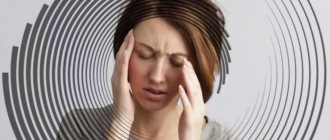Inflammation
Inflammatory causes of ear congestion:
- external otitis of any etiology (fungal, bacterial, viral);
- eustacheitis (tubootitis);
- catarrhal otitis media, bullous otitis (with influenza);
- purulent otitis media (including chronic);
- exudative otitis;
- adhesive otitis media
With inflammation in the nasal cavity, paranasal sinuses or pharynx, swelling of the nasopharyngeal mouth of the auditory tube occurs, due to which the pressure in the tympanic cavity and the environment ceases to equalize, and the drainage function of the auditory tube is disrupted. The infectious agent, together with the discharged contents from the nasal cavity and paranasal (paranasal) sinuses, enters the auditory tube and tympanic cavity, causing inflammation of the auditory tube - eustacheitis (tubo-otitis) and otitis media.
Due to inflammation, swelling of the mucous membrane of the middle ear and eardrum occurs, sound-conducting mechanisms stop working normally, and ear congestion occurs, and hearing decreases. A common cause of dysfunction of the auditory tube and the development of otitis in children is hypertrophy of the nasopharyngeal tonsil and adenoiditis. In adults, vasomotor and allergic rhinitis and deviated septum are common causes of swelling at the mouth of the auditory tube. The cause may also be a violation of blood circulation and innervation in the inner ear.
With inflammation in the external auditory canal, swelling of its walls appears, fungal or purulent masses clog the ear canal, and the surface layers of the eardrum become inflamed (myrinigitis). Because of this, the mobility of the eardrum, necessary for proper sound transmission, is reduced.
Most of the described forms of otitis often occur as complications of acute respiratory diseases, sinusitis, rhinitis, especially in the case of improper cleansing of the nasal cavity. In addition to the feeling of congestion during otitis media, shooting, sharp or aching pains, hearing problems, bloody, fungal, purulent discharge, itching, a feeling of pulsation or fluid transfusion in the ear can be added.
A feeling of ear fullness also occurs when:
- water getting into the ears (usually when swimming), the water usually evacuates on its own and does not require intervention;
- when a cerumen or epithelial plug forms (can also occur after water gets into the ear due to swelling of the cerumen plug);
- foreign bodies getting into the ears: insects, earbuds, cotton wool from cosmetic sticks, etc.
After eliminating the provoking factor, the discomfort disappears and hearing is restored.
How to get rid of headaches
In order for headaches, runny nose, cough, and symptoms of respiratory viral diseases to subside as soon as possible, you need to take care of yourself by following a gentle regimen throughout the entire treatment period. Do not prescribe medications for yourself without first consulting a doctor - only a doctor knows how to relieve headaches during a cold and what medications should be prescribed in a particular case.
Non-drug treatment
- Minimize physical activity, ideally staying in bed and getting plenty of sleep.
- Refrain from books, TV, computer, smartphone - and in general from mental stress of any kind.
- Make sure the room has enough fresh air and is not too dry, hot or cold.
- Drink plenty of fluids. Water and other non-alcoholic drinks - berry fruit drinks, herbal teas, rosehip decoction - help remove toxins from the body, thereby eliminating one of the main causes of the development of symptoms of headache, cough and runny nose.
Drug treatment
Antipyretic drugs prescribed for the flu, as a rule, can relieve headaches, runny nose and weakness, but they should only be used when the body temperature is really high (from 38 ° C for children and from 38.5 ° C for adults). You should also use analgesics with caution: swallowing one painkiller tablet after another is unacceptable. In many cases, when treating headaches due to colds, you can give preference to herbal remedies. Dr. MOM® Phyto ointment, intended for both adults and children over 3 years of age, can bring noticeable relief to the patient. This is a local remedy used for headaches, colds, and viral infections. It contains four essential oils and helps relieve headaches from colds without fever or with signs of fever. When applied, the drug has a local irritating, distracting, anti-inflammatory and antiseptic effect. To get rid of headaches due to colds, Doctor MOM® Phyto ointment should be applied to the temples. When you are also worried about a runny nose, the ointment will also help ease your breathing if you apply it to the wings of your nose.
Sensorineural hearing loss
The cause of hearing loss and a feeling of fullness in the ears may be sensorineural hearing loss, which occurs as a result of a violation of the blood supply or innervation in the inner ear.
Sensorineural hearing loss can result from:
- changes in blood pressure due to hypertension;
- acute viral diseases;
- barotrauma;
- fracture of the base of the skull;
- ischemia of the central areas of the auditory analyzer;
- neuroma of the vestibulocochlear nerve;
- compression from the outside by neoplasms and vascular aneurysms.
Symptoms of ear congestion
Associated symptoms for various ear diseases:
| Cause | Symptoms | |||||||
| Pain | Ear discharge | Itching | Hearing loss | Autophony | Noise | Sensation of fluid transfusion | Manifestations of general intoxication | |
| Sulfur plug | No | No | Not really | Yes | Not really | Not really | No | No |
| Otitis externa | Yes | Not really | Yes | Yes | Not really | No | No | Not really |
| Tubootitis | Not really | No | No | Yes | Yes | Not really | No | Not really |
| Otitis media | Yes | No | No | Yes | Yes | Not really | No | Yes |
| Suppurative otitis media | Yes | Yes | Not really | Yes | Not really | Not really | No | Yes |
| Exudative otitis media | No | No | No | Yes | Yes | Not really | Yes | No |
| Sensorineural hearing loss | No | No | No | Yes | Not really | Yes | No | No |
Diagnosis of ear congestion
Standard examinations for any ear pathology:
- video endoscopy or microscopy of the ear;
- video endoscopy of the nose and nasopharynx;
- audiometry;
- tympanometry;
If necessary, additional studies are prescribed:
- computed tomography or magnetic resonance imaging of the temporal bones and brain;
- culture of nasal discharge and external auditory canal for flora and sensitivity to antibiotics;
- general blood test, blood glucose (other additional laboratory tests are possible after consulting a doctor);
- Doppler ultrasound of neck vessels;
- consultations with other specialists.
Treatment
Treatment for ear congestion and otitis media involves treating the underlying cause of the disease:
- in case of an inflammatory process in the nasal cavity and paranasal sinuses, antibacterial therapy is prescribed, in addition, lavage of the nasal cavity is prescribed, which eliminates the discharge of discharge into the auditory tube during self-washing, treatment with a YAMIK catheter, puncture of the maxillary sinuses, physiotherapy;
- if a chronic pathology of the nasal cavity or nasopharynx is detected, leading to the closure of the mouth of the auditory tube, surgical treatment is performed (adenotomy, vasotomy, septoplasty, etc.);
- To remove wax plugs or foreign bodies, the doctor performs lavage (under visual control) or instrumental removal of the foreign body;
- for external otitis, the outer ear is washed and its walls are treated with antifungal and antibacterial drugs;
- in case of dysfunction of the auditory tube or exudate in the tympanic cavity, medical procedures are necessary: pneumomassage of the tympal membrane, blowing of the ears according to Politzer, catheterization of the eustachian tube, paracentesis or shunting of the eardrum;
- for sensorineural (sensorineural) hearing loss, a course of vascular and vitamin therapy is prescribed to improve the nutrition of the inner ear and brain.
My head is spinning from viruses: labyrinthitis
p>Soreness and “stuffiness” of the ears during ARVI, as a rule, does not attract much attention. After all, for the most part, unpleasant sensations pass quite quickly, leaving no traces. However, the usual acute respiratory viral infections are not as harmless as they may seem, and can leave dizziness, loss of balance, nausea and hearing loss as a “memento.”
Labyrinth of Balance and Hearing
The most important structure of the inner ear is the labyrinth.
This formation is located in the thickness of the temporal bone (that is, inside the skull) and consists of several interconnected and fluid-filled cavities and passages.
It is here that there are “antennas” for capturing sound (cochlea), as well as receptors that determine the position of the body in space (vestibular apparatus). And inflammation of the labyrinth (labyrinthitis) will make any head “go in circles.”
Don't miss labyrinthitis
The viral origin of labyrinthitis, fortunately, is quite rare. And not many viruses are known that can provoke labyrinthitis.
These are influenza viruses, measles, rubella, “classical” herpes and the Epstein-Barr virus, most of which do not have ARVI symptoms. So the real threat of labyrinthitis during the “season” of ARVI is represented only by “influenza-like infections”.
With a decrease in immunity, viruses “cross” the protective barriers and through the bloodstream can penetrate into the labyrinth, the symptoms of inflammation of which are quite difficult to “not notice”:
- dizziness of varying intensity, occurring in any position of the body or only when turning the head;
- unsteadiness of gait;
- impaired coordination of movements;
- loss of balance and unexpected falls;
- nausea and vomiting that does not bring relief;
- nystagmus (eye movements as if looking out of a train window)
- sometimes tinnitus, hearing impairment (especially when turning the head);
- noticeable pallor
- and excessive sweating.
The appearance of such symptoms in parallel or as ARVI subsides is a serious reason to consult an otolaryngologist. After all, without treatment, labyrinthitis can not only become chronic, but be complicated by the development of meningitis.
How to check
The presence of characteristic symptoms and a clear connection with ARVI, in most cases, make it possible to accurately diagnose “labyrinthitis” already at the stage of examination by an ENT doctor.
However, in severe cases, with an atypical course or suspicion of “brain” complications, the doctor may resort to the “help” of a CT scan of the temporal bones or an MRI of the brain.
And among laboratory examination methods, in the case of uncomplicated labyrinthitis, only a clinical blood test with leukocyte count and ESR (assessment of the severity and nature of inflammation) is indicated.
Basic treatment regimens for ear pathology*
| Pathology | Basic treatment methods |
| Sulfur plug | Removal by rinsing or instrumental removal. |
| Otitis externa | Toilet of the external auditory canal, treatment with medications, ear drops, vasoconstrictor nasal sprays, systemic antibacterial or antifungal therapy, FTL**. |
| Tubootitis | Vasoconstrictor nasal sprays, blowing of the eustachian tubes according to Politzer, pneumomassage of the eardrum, FTL**, catheterization of the auditory tubes if necessary. |
| Otitis media | Vasoconstrictor nasal sprays, systemic antibacterial therapy, ear drops, Politzer ear blowing, pneumomassage of the eardrum, FTL**, if necessary, catheterization of the auditory tubes, lavage of the nasal cavity using the moving method. If necessary, surgical treatment - eardrum bypass or paracentesis. Complemented by the treatment of diseases of the ENT organs. |
| Suppurative otitis media | Vasoconstrictor nasal sprays, systemic antibacterial therapy, ear drops, Politzer blowing, if necessary, transtympanic injection of drugs, catheterization of auditory tubes, nasal lavage using the displacement method. If necessary, surgical treatment - eardrum bypass or paracentesis and other operations, FTL**. It is supplemented by treatment of pathologies of the nasal cavity, nasopharynx and paranasal sinuses, if indicated. |
| Exudative otitis media | Vasoconstrictor nasal sprays, mucolytics, Politzer blowing, catheterization of auditory tubes. If necessary, surgical treatment - eardrum bypass or paracentesis, FTL**. It is complemented by the treatment of pathologies of the nasal cavity, nasopharynx and paranasal sinuses. |
| Sensorineural hearing loss | Catheterization of auditory tubes, systemic vascular and vitamin therapy. |
*These treatment regimens are not a recommendation for self-treatment and serve to familiarize patients with basic treatment methods. The final decision on treatment and examination methods is made by the doctor after the examination!
** FTL – physiotherapeutic treatment.
general characteristics
With ear congestion, patients report a feeling of discomfort, fullness in the external auditory canal, and decreased hearing, accompanied by a constant hum or ringing.
Some people compare the sensation to the ear canal filling with water. With short-term physiological congestion, bilateral symptoms are more often detected; inflammation and other pathological causes can cause unilateral manifestations. Congestion can last from several minutes to several weeks. Patients often notice a connection between discomfort in the ear and acute bacterial or viral infections, injuries to the auricle or head in the temporal region. If congestion bothers you constantly or occurs periodically over several days, this is an indication for a visit to a specialist. It is also necessary to visit a doctor when the symptom is combined with other manifestations - headaches or pain in the ear canal, dizziness, increased body temperature.











